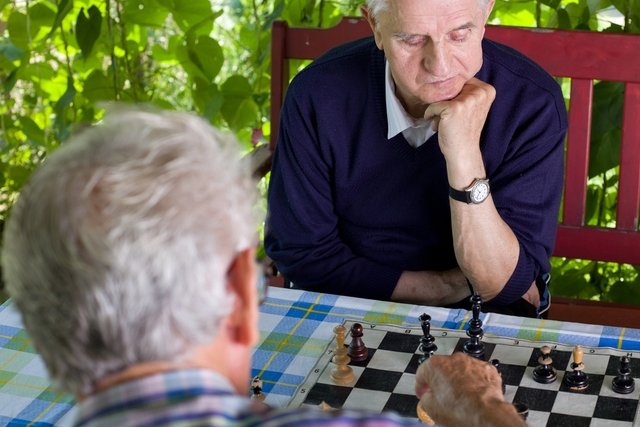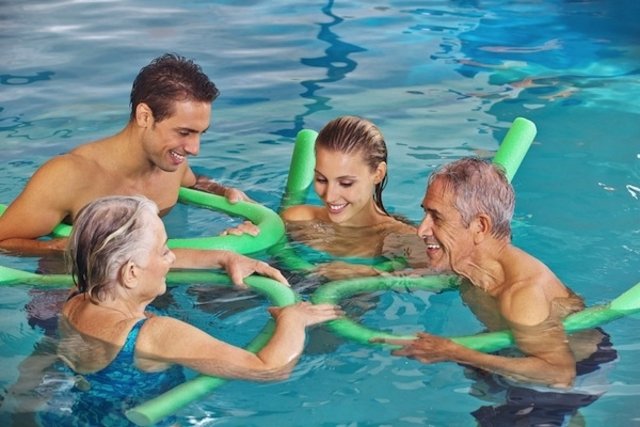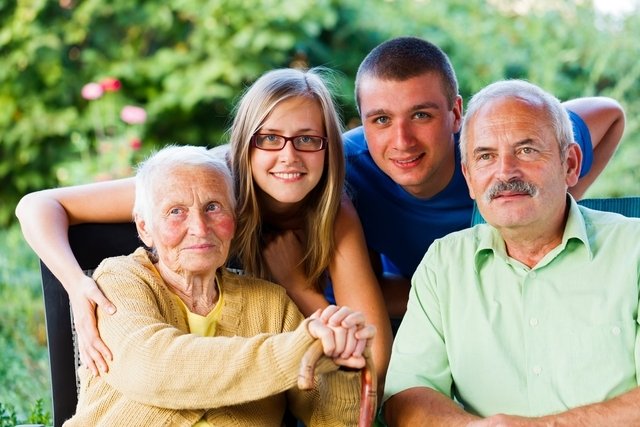Alzheimer’s patients need to take dementia medications every day and stimulate their brain in different ways. Therefore, it is recommended that he be accompanied by a caregiver or family member, because being accompanied is easier to maintain the necessary care and slow the progression of memory loss.
Furthermore, the caregiver must help the elderly person with daily tasks, such as eating, bathing or dressing, for example, because these activities can be forgotten due to the characteristics of the disease.
1. Medicines for Alzheimer’s

Alzheimer’s patients need to take daily dementia medications, such as Donepezil or Memantine, which help slow the progression of the disease and control behaviors, such as agitation and aggression. However, it can be difficult for the patient to take the medicines alone, as they may forget and therefore the caregiver must always be attentive to ensure that the medicine is taken at the times indicated by the doctor.
However, it is also common for people with Alzheimer’s to not want to take the pills. A good tip is to knead and mix the medicine with yogurt or soup, for example.
Read more about the main medicines used to treat Alzheimer’s.
2. Brain Workout

Brain function training must be done daily to stimulate the patient’s memory, language, orientation and attention, and individual or group activities can be carried out with a nurse or occupational therapist.
The objective of activities, such as completing puzzles, looking at old photographs or reading the newspaper, for example, is to stimulate the brain so that it functions properly, for as long as possible, helping to remember moments, maintain speech, perform small tasks and to recognize other people and yourself.
Furthermore, it is essential to promote patient orientation, having an up-to-date calendar on the wall at home, for example, or informing them several times a day about their name, date or season.
See also a list of some exercises that help stimulate the brain.
3. Physical activity

Alzheimer’s disease leads to a decrease in the person’s mobility, increasing the difficulty in walking and maintaining balance, which makes it impossible to carry out day-to-day activities autonomously, such as walking or lying down, for example.
Therefore, physical activity has several advantages for Alzheimer’s patients, such as:
- Avoid pain in muscles and joints;
- Prevent falls and fractures;
- Increase peristaltic movements of the intestine, facilitating the elimination of feces;
- Delay the patient from becoming bedridden.
You should do physical activity every day, such as walking or doing water aerobics for at least 30 minutes every day. Furthermore, depending on the severity of the disease, it may be necessary to undergo physiotherapy sessions to maintain quality of life. Understand what is done in physiotherapy sessions for Alzheimer’s.
4. Social contact
Alzheimer’s patients must maintain contact with friends and family to avoid isolation and loneliness, which leads to an increase in the loss of cognitive abilities. Therefore, it is important to go to the bakery, walk in the garden or be present at family members’ birthdays, to talk and interact.
However, it is important to be in calm places, as noise can increase the level of confusion, making the person more agitated or aggressive.
5. Adaptation of the house

Patients with Alzheimer’s are at greater risk of falling due to the use of medication and loss of balance and, therefore, their home must be spacious and there must be no objects in the passageways.
Furthermore, the patient must wear closed shoes and comfortable clothing to avoid falling.
6. How to talk to the patient
The Alzheimer’s patient may not find the words to express himself or even not understand what is said to him, not following orders, and, therefore, it is important to remain calm while communicating with him. To do this, you need:
- Be close and look the patient in the eye, so that the patient realizes that they are talking to him;
- Hold the hand from the patient, to demonstrate affection and understanding;
- Speak calmly and say short sentences;
- Make gestures to explain what you are saying, giving examples if necessary;
- Use synonyms to say the same thing for the patient to understand;
- To hear what the patient wants to say, even if it is something they have already said several times, as it is normal for them to repeat their ideas.
In addition to Alzheimer’s disease, the patient may hear and see poorly and, therefore, it may be necessary to speak louder and face the patient so that they can hear correctly.
However, the cognitive capacity of Alzheimer’s patients is greatly altered and even if they follow instructions when speaking, they may still not understand.
7. How to keep the patient safe
Generally, patients with Alzheimer’s do not identify the dangers and can put their lives and those of others at risk. To minimize the dangers, one must:
- Put on an identification bracelet with the name, address and telephone number of a family member on the patient’s arm;
- Inform neighbors of the patient’s condition, if necessary, help you;
- Keep doors and windows closed to prevent it from running away;
- Hide keysespecially at home and in the car because the patient may want to drive or leave the house;
- Do not have visible dangerous objectslike glasses or knives, for example.
Furthermore, it is essential that the patient does not walk alone, and must always leave the house accompanied, as the risk of getting lost is very high.
8. How to take care of hygiene
As the disease progresses, it is common for the patient to need help with their hygiene, such as bathing, dressing, or combing their hair, for example, as, in addition to forgetting to do so, they no longer recognize the function of objects. and how each task is done.
Therefore, for the patient to remain clean and comfortable, it is important to help them in this process, showing them how to do it so that they can repeat it. Furthermore, it is important to involve him in the tasks, so that this moment does not cause confusion and generate aggression. See more at: How to care for a bedridden person.
9. What the diet should be like
Patients with Alzheimer’s disease lose the ability to cook and, little by little, lose the ability to eat with their own hands, in addition to having difficulty swallowing. Therefore, the caregiver must:
- Prepare meals that please the patient and not giving new foods to try;
- Use a large napkin, like a bib,
- Avoid talking during the meal so as not to distract the patient;
- Explain what you are eating and what the objects are for, fork, cup, knife, if the patient refuses to eat;
- Do not antagonize the patient if he doesn’t want to eat or if he wants to eat with his hand, to avoid moments of aggression.
Furthermore, it may be necessary to follow a diet recommended by a nutritionist, in order to avoid malnutrition and, in the case of swallowing problems, it may be necessary to follow a soft diet. Read more at: What to eat when I can’t chew.
10. What to do when the patient is aggressive
Aggressiveness is a characteristic of Alzheimer’s disease, manifesting itself through verbal threats, physical violence and destruction of objects.
Typically, aggressiveness arises because the patient does not understand orders, does not recognize people and, sometimes, feels frustrated when realizing the loss of their abilities. In these moments, the caregiver must remain calm, trying to:
- Do not discuss or criticize the patientdevaluing the situation and speaking calmly;
- Don’t touch the person when she is aggressive;
- Do not show fear or anxiety when the patient is aggressive;
- Avoid giving orderseven if simple during that moment;
- Remove objects that can be thrown proximity to the patient;
- Change the subject and encourage the patient to do something they enjoya, like reading the newspaper, for example, in order to forget what caused the aggression.
Generally, moments of aggression are quick and fleeting and, normally, the patient with Alzheimer’s disease does not remember the event.

Sign up for our newsletter and stay up to date with exclusive news
that can transform your routine!
Warning: Undefined array key "title" in /home/storelat/public_html/wp-content/plugins/link-whisper-premium/templates/frontend/related-posts.php on line 12
Warning: Undefined array key "title_tag" in /home/storelat/public_html/wp-content/plugins/link-whisper-premium/templates/frontend/related-posts.php on line 13




